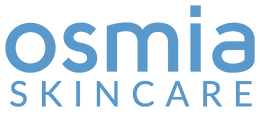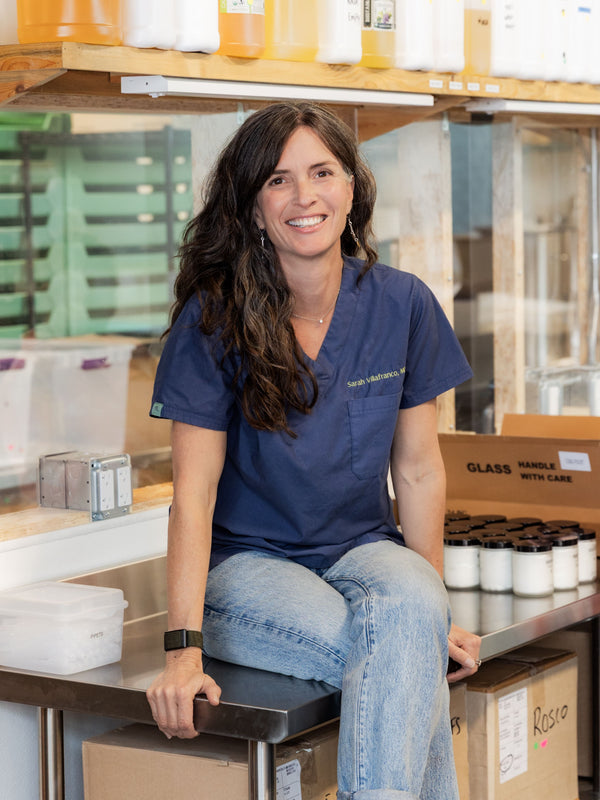When I worked in the ER, we ordered something called a "tox screen" on patients who came in intoxicated, confused, unconscious, or otherwise non-communicative. The purpose of the tox screen was to identify toxic substances like barbiturates or cocaine in the patient’s system so we could understand their condition and treat them accordingly.
We used to refer to our own version of this idea on Osmia packaging as a "Tox Screen" — a quick visual reference showing what isn't in our formulas. While we no longer use the term on our packaging, the list remains unchanged. These are categories of ingredients we’ve chosen to avoid based on real, emerging science and a strong desire to formulate skincare that supports the health of humans, animals, and the planet.

Why We Don't Use Parabens
Parabens are widely used preservatives, especially in large-scale personal care products, because they are very effective in preventing microbial growth in emulsion products (lotions and creams) for years. You’ll see names like methylparaben, butylparaben, and propylparaben. And it's absolutely true that any skincare product made with water or water-soluble ingredients (like aloe or hydrosols) needs to be preserved in order to be safe. Unfortunately, parabens are increasingly becoming associated with hormone disruption. Studies have shown that higher paraben levels in the body correlate with decreased menstrual cycle length, reduced birth weight, and earlier gestational age. For us, it’s not worth the risk—we use alternative preservation systems that don’t come with these concerns.
Why We Don't Use Phthalates
Phthalates are used in many pesticides, in certain plastics to make them flexible, and in fragrance to make it last longer. They can be absorbed through the lungs, the intestines, the skin, and through the blood stream via IV tubing. Even if you make a conscious effort to avoid them, you probably have detectable levels in your urine just from being a human in modern society. But the science is concerning: they act as xenoestrogens, mimicking estrogen in the body and potentially interfering with normal hormone regulation. Studies suggest links between phthalate exposure and obesity, breast cancer, reproductive disorders, and thyroid dysfunction. In skincare, the most common phthalate-containing ingredient is synthetic fragrance, which can be listed on a label as "fragrance," "fragrance blend," and "parfum." On our labels, you'll only find essential oils in our scented products.
Why We Don't Use Sulfates
Sulfates like SLS (sodium lauryl sulfate) and SLES (sodium laureth sulfate) make products foam and lather. But they’re also known skin irritants, especially for those with conditions like perioral dermatitis (a specialty of ours). SLES is sometimes considered milder, but it’s also ethoxylated—which introduces another set of concerns (see below). Our approach is to skip sulfates entirely and use gentler cleansing agents. And if you have any skin issues whatsoever, we recommend eliminating sodium lauryl/laureth sulfate from your life completely.
Why We Don't Use Petrochemicals
Petrochemicals like petroleum jelly and mineral oil are used in personal care products to protect the skin and prevent water loss, and are readily available as byproducts of the petroleum industry. But they can clog pores and inhibit the skin’s natural exchange functions, so we don't think they are the healthiest choices. This category also includes phenoxyethanol, a preservative used by many natural skincare brands, but still a petroleum-derived and ethoxylated ingredient. We do use plastic packaging (also petroleum derived) for a few products where the ingredients needs to be protected from light and contamination, but we are always working to evolve our packaging as new and better options emerge.
Why We Don't Use Ethoxylated Ingredients
Ethoxylation is a chemical process involving ethylene oxide (a known carcinogen) to create ingredients that enhance penetration and help stabilize emulsions. Unfortunately, this process also produces 1,4-dioxane—another known carcinogen that may contaminate the final product. 1,4-dioxane has been found in fetal blood supply, breast milk, and drinking water, and is a significant environmental and groundwater contaminant, causing mutations in multiple other species.
To make matters worse, ethoxylated ingredients often go by sneaky names:
- Ingredients ending in "-eth" (sodium laureth sulfate)
- Polysorbates
- PEG compounds
- "Emulsifying wax" or "Emulsifying Wax NF"
- Phenoxyethanol
We avoid them all, which very few skincare brands do—including the majority of the "clean" ones.
Why We Don't Use Artificial Colors
Most synthetic dyes (like FD&C colors) are petroleum-derived and serve no real purpose in skincare besides making products look bright and uniform. While they're approved for use by the FDA, there is growing concern about their health effects. Instead, we color our bar soaps naturally using botanicals and mineral clays—ingredients that support the skin while also looking lovely. We'll leave the technicolor rainbow soaps to someone else.
Why We Don't Use Synthetic Fragrance
Synthetic fragrance is complex and poorly regulated. Companies aren’t required to disclose individual components—concerning because most synthetic fragrance contains both petrochemicals and phthalates, and some have hundreds of components. Fragrance is a common allergen and frequent trigger for migraines and skin reactions. We hear from customers all the time who react to artificial scent but can tolerate our essential oil blends with no issues. The speed with which I develop a splitting headache and nausea when I'm in an Uber with an "air freshener" is compelling evidence, especially when I can work with essential oils all day and have zero side effects.
For us, scent should be a gentle and natural part of your experience—not something that overwhelms your senses, lingers for days, and does not change as you wear it. Nature doesn’t smell the same all the time, and we don’t want to either.

If these choices align with your values, we invite you to explore our collection—every formula reflects this list, with love and intention behind every ingredient.
With love and a healthier skincare routine,

The information contained in this post is for educational interest only. This information is not intended to be used for diagnosis or treatment of any physical or mental illness, disease, or skin conditions.
References
- Early Phthalates Exposure in Pregnant Women Is Associated with Alteration of Thyroid Hormones
- Cytochrome P450-inhibitory activity of parabens and phthalates used in consumer products
- Endocrine disrupting chemicals and endometriosis
- Association between paraben exposure and menstrual cycle in female university students in Japan
- Association of birth outcomes with fetal exposure to parabens, triclosan and triclocarban in an immigrant population in Brooklyn, New York
- Association of environmental chemicals & estrogen metabolites in children
- Carcinogenicity studies of 1,4-dioxane administered in drinking-water to rats and mice for 2 years
- DIET AND NUTRITION: The Artificial Food Dye Blues






















